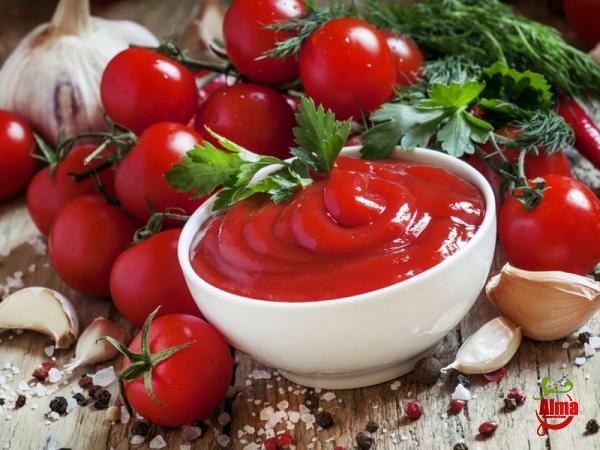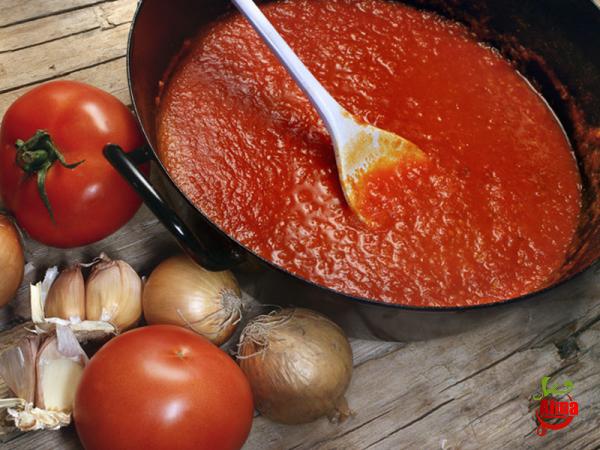Enhancing Flavor and Texture: A Guide to Thicken Tomato-Based Sauce Introduction: Tomato-based sauces are widely used in various cuisines and can be found in dishes like pasta, pizza, stews, and curries. While these sauces are favored for their rich flavor and versatility, there may be instances where a thicker consistency is desired to enhance the overall dining experience. This article serves as a comprehensive guide to thickening tomato-based sauces, exploring various techniques, ingredients, and tips to achieve the desired texture while maintaining the sauce’s delicious taste. I. Understanding the Importance of Sauce Thickness: 1.1. Texture Impact: The thickness of a tomato-based sauce greatly affects its mouthfeel and the way it clings to ingredients. 1.2. Flavor Concentration: Thicker sauces tend to have more concentrated flavors, intensifying the overall taste. II. Techniques for Thickening Tomato-Based Sauce: 2.1. Reduction: 2.1.1. Simmering: Allowing the sauce to simmer for an extended period helps evaporate excess liquid, thus thickening the sauce naturally. 2.1.2. Uncovering the Pot: By removing the lid during the simmering process, more moisture can evaporate, further thickening the sauce. 2.1.3. Time and Patience: Reducing a sauce can take time, but it allows for the development of deeper flavors and a thicker consistency. 2.2. Roux Incorporation: 2.2.1. Definition and Preparation: Understanding roux, a classic thickener made from equal parts fat and flour, and various types of roux (white, blonde, and brown). 2.2.2. Incorporating Roux into Tomato-Based Sauce: Adding roux at the beginning, middle, or end of the cooking process to achieve different levels of thickness. 2.2.3. Ensuring Proper Cooking: Cooking roux sufficiently to remove the raw flour taste without burning it. 2.3. Simmering with Lid Partially Off: 2.3.1. Creating Desired Evaporation: Partially covering the pot allows some steam to escape, causing the sauce to thicken over time. 2.3.2. Frequent Stirring: Stirring the sauce periodically prevents it from sticking to the bottom of the pot and promotes even heat distribution. 2.4. Incorporating Tomato Paste: 2.4.1. Tomato Paste Characteristics: Understanding the thickening properties and concentrated flavor of tomato paste. 2.4.2. Proper Incorporation: Adding tomato paste to a simmering sauce gradually, allowing it to dissolve and thicken the sauce evenly. 2.4.3. Adjusting the Taste: Balancing the new intensity of flavor when using tomato paste in the sauce. III. Enhancing the Texture and Flavor of Tomato-Based Sauce: 3.1. Using Starchy Ingredients: 3.1.1. Introduction to Starch: Exploring various starches like cornstarch, arrowroot, and tapioca flour, and their thickening properties. 3.1.2. Mixing and Dilution: Creating a slurry by mixing starch with water or broth before incorporating it into the sauce. 3.1.3. Proper Cooking Techniques: Adding the slurry gradually and cooking for a few minutes to allow the starch to activate. 3.2. Vegetable Purees: 3.2.1. Healthier Thickening Agents: Utilizing vegetable purees, such as cooked carrots, potatoes, or butternut squash, to thicken the sauce naturally.

tomato paste
 3.2.2. Blending and Incorporation: Pureeing cooked vegetables and gradually adding them to the sauce, adjusting the flavor as necessary. 3.3. Cheese Addition: 3.3.1. Thickening and Flavor Enhancement: Incorporating cheese, such as parmesan or pecorino romano, to achieve a thicker consistency and enhance the sauce’s taste. 3.3.2. Melting Cheese: Adding cheese to the sauce gradually and stirring until completely melted and evenly distributed. IV. Tips for Thickening Tomat-Based Sauce Successfully: 4.1. Balancing Flavors: Adjusting the seasonings, acidity, and sweetness of the sauce to maintain a well-rounded taste after thickening. 4.2. Consistency Checks: Regularly assessing the sauce’s thickness throughout the cooking process and making adjustments gradually. 4.3. Incremental Additions: Incorporating thickening agents or techniques gradually to avoid over-thickening the sauce. 4.4. Resting Time: Allowing the sauce to rest and cool slightly after thickening to assess the final consistency. 4.5. Proper Storage: Storing thickened tomato-based sauce in airtight containers and reheating gently to avoid further thickening or altering the flavor. Conclusion: Thickening tomato-based sauce not only enhances its texture but also concentrates its flavors, elevating the overall dining experience. Various techniques like reduction, roux incorporation, simmering with the lid partially off, and incorporating tomato paste can effectively thicken the sauce. Additionally, using starchy ingredients, vegetable purees, and cheese can provide alternative methods to achieve the desired consistency. By following these techniques and tips, anyone can successfully thicken tomato-based sauce while maintaining its delicious taste.I. Thicken Tomato-Based Sauce: An Opportunity for Culinary Businesses As the demand for diverse and flavorful culinary creations continues to grow, businesses in the food industry have an opportunity to cater to customers’ preferences for thickened tomato-based sauces. By offering unique and delicious options, businesses can attract a wider customer base and differentiate themselves from competitors. In this section, we will explore the potential benefits and business strategies related to thickening tomato-based sauces.
3.2.2. Blending and Incorporation: Pureeing cooked vegetables and gradually adding them to the sauce, adjusting the flavor as necessary. 3.3. Cheese Addition: 3.3.1. Thickening and Flavor Enhancement: Incorporating cheese, such as parmesan or pecorino romano, to achieve a thicker consistency and enhance the sauce’s taste. 3.3.2. Melting Cheese: Adding cheese to the sauce gradually and stirring until completely melted and evenly distributed. IV. Tips for Thickening Tomat-Based Sauce Successfully: 4.1. Balancing Flavors: Adjusting the seasonings, acidity, and sweetness of the sauce to maintain a well-rounded taste after thickening. 4.2. Consistency Checks: Regularly assessing the sauce’s thickness throughout the cooking process and making adjustments gradually. 4.3. Incremental Additions: Incorporating thickening agents or techniques gradually to avoid over-thickening the sauce. 4.4. Resting Time: Allowing the sauce to rest and cool slightly after thickening to assess the final consistency. 4.5. Proper Storage: Storing thickened tomato-based sauce in airtight containers and reheating gently to avoid further thickening or altering the flavor. Conclusion: Thickening tomato-based sauce not only enhances its texture but also concentrates its flavors, elevating the overall dining experience. Various techniques like reduction, roux incorporation, simmering with the lid partially off, and incorporating tomato paste can effectively thicken the sauce. Additionally, using starchy ingredients, vegetable purees, and cheese can provide alternative methods to achieve the desired consistency. By following these techniques and tips, anyone can successfully thicken tomato-based sauce while maintaining its delicious taste.I. Thicken Tomato-Based Sauce: An Opportunity for Culinary Businesses As the demand for diverse and flavorful culinary creations continues to grow, businesses in the food industry have an opportunity to cater to customers’ preferences for thickened tomato-based sauces. By offering unique and delicious options, businesses can attract a wider customer base and differentiate themselves from competitors. In this section, we will explore the potential benefits and business strategies related to thickening tomato-based sauces.
Specifications of tomato paste
 1. Meeting Customer Preferences: Incorporating thickened tomato-based sauces into menu offerings is likely to appeal to customers who enjoy heartier and more substantial dishes. By understanding their preferences and offering a range of sauce consistencies, businesses can cater to a wider audience, including those who prefer thicker sauces for their pasta, pizzas, or meat dishes. 2. Menu Differentiation: Thickened tomato-based sauces provide an opportunity for culinary businesses to stand out amongst competitors. By creating unique flavor profiles and experimenting with different thickening techniques, businesses can offer signature dishes that are not easily replicated, setting themselves apart from other establishments. 3. Enhanced Culinary Offerings: Thickened tomato-based sauces present an opportunity for businesses to enhance their existing culinary offerings. By incorporating different spices, ingredients, or cooking methods, businesses can create sauces that not only add texture but also increase the overall taste and complexity of their dishes. 4. Premium Pricing: Thicker sauces often require more time, effort, and quality ingredients to achieve the desired consistency. This presents an opportunity for businesses to set a premium price on dishes featuring thickened tomato-based sauces. Customers are often willing to pay more for an elevated dining experience, especially when it comes to unique and flavorful creations. II. Research and Development for Flavorful Thickened Tomato-Based Sauces To successfully incorporate thickened tomato-based sauces into a culinary business, thorough research and development are essential. This section will outline key considerations and strategies for researching and developing distinctive and delicious sauces. 1. Exploring Different Culinary Traditions: A variety of culinary traditions incorporate thickened tomato-based sauces into their dishes. Researching diverse cuisines such as Italian, Mexican, Indian, or Middle Eastern cuisines can provide inspiration and valuable insights into traditional sauce-making techniques, including the use of starches, cheese, roux, or vegetable purees. 2. Flavor Profiling: Developing thickened tomato-based sauces requires a keen understanding of flavor profiles. Experiment with different herbs, spices, and seasonings to create sauces that are not only thick but also bursting with savory, sweet, or tangy flavors. Test various combinations to find well-balanced blends that complement different dishes. 3. Creative Ingredient Combinations: Exploring unique ingredient combinations can set a culinary business apart from the competition. Consider incorporating unconventional ingredients like roasted red peppers, chipotle chilies, caramelized onions, or balsamic vinegar into thickened tomato-based sauces, adding depth and complexity to the flavor profiles. 4. Consumer Feedback and Testing: To refine your sauces, consider conducting consumer tests and tastings. Gather feedback from customers, incorporating their suggestions and preferences into the development process. This iterative approach will ensure that you create sauces that resonate with your target market.
1. Meeting Customer Preferences: Incorporating thickened tomato-based sauces into menu offerings is likely to appeal to customers who enjoy heartier and more substantial dishes. By understanding their preferences and offering a range of sauce consistencies, businesses can cater to a wider audience, including those who prefer thicker sauces for their pasta, pizzas, or meat dishes. 2. Menu Differentiation: Thickened tomato-based sauces provide an opportunity for culinary businesses to stand out amongst competitors. By creating unique flavor profiles and experimenting with different thickening techniques, businesses can offer signature dishes that are not easily replicated, setting themselves apart from other establishments. 3. Enhanced Culinary Offerings: Thickened tomato-based sauces present an opportunity for businesses to enhance their existing culinary offerings. By incorporating different spices, ingredients, or cooking methods, businesses can create sauces that not only add texture but also increase the overall taste and complexity of their dishes. 4. Premium Pricing: Thicker sauces often require more time, effort, and quality ingredients to achieve the desired consistency. This presents an opportunity for businesses to set a premium price on dishes featuring thickened tomato-based sauces. Customers are often willing to pay more for an elevated dining experience, especially when it comes to unique and flavorful creations. II. Research and Development for Flavorful Thickened Tomato-Based Sauces To successfully incorporate thickened tomato-based sauces into a culinary business, thorough research and development are essential. This section will outline key considerations and strategies for researching and developing distinctive and delicious sauces. 1. Exploring Different Culinary Traditions: A variety of culinary traditions incorporate thickened tomato-based sauces into their dishes. Researching diverse cuisines such as Italian, Mexican, Indian, or Middle Eastern cuisines can provide inspiration and valuable insights into traditional sauce-making techniques, including the use of starches, cheese, roux, or vegetable purees. 2. Flavor Profiling: Developing thickened tomato-based sauces requires a keen understanding of flavor profiles. Experiment with different herbs, spices, and seasonings to create sauces that are not only thick but also bursting with savory, sweet, or tangy flavors. Test various combinations to find well-balanced blends that complement different dishes. 3. Creative Ingredient Combinations: Exploring unique ingredient combinations can set a culinary business apart from the competition. Consider incorporating unconventional ingredients like roasted red peppers, chipotle chilies, caramelized onions, or balsamic vinegar into thickened tomato-based sauces, adding depth and complexity to the flavor profiles. 4. Consumer Feedback and Testing: To refine your sauces, consider conducting consumer tests and tastings. Gather feedback from customers, incorporating their suggestions and preferences into the development process. This iterative approach will ensure that you create sauces that resonate with your target market.
buy tomato paste
 III. Marketing and Menu Integration Strategies To effectively promote and integrate thickened tomato-based sauces into a culinary business, a comprehensive marketing and menu integration strategy is essential. This section will explore key strategies to successfully introduce and highlight thickened tomato-based sauces to customers. 1. Menu Description and Imagery: When incorporating thickened tomato-based sauces into the menu, make sure to provide clear and enticing descriptions that highlight the unique texture and flavors. Accompany these descriptions with high-quality imagery that showcases the sauce’s thickness and how it enhances the dishes. 2. Chef Recommendations: Leverage the expertise of your chefs by including their recommendations for dishes featuring thickened tomato-based sauces. Customers often rely on the expertise and suggestions of chefs when making dining choices, so featuring their recommendations can increase the chances of customers trying and enjoying these sauces. 3. Sauce Tastings: To create excitement around your thickened tomato-based sauces, consider offering complimentary sauce tastings or pairing suggestions. This gives customers the opportunity to experience the flavors and textures firsthand and can lead to increased interest and purchase intent. 4. Limited-Time Offerings and Seasonal Specials: Creating limited-time offerings and seasonal specials featuring thickened tomato-based sauces can generate a sense of exclusivity and urgency. This strategy can drive customer interest and encourage them to try the sauces before they are no longer available, thus boosting sales. IV. Operational Considerations for Implementing Thicker Tomato-Based Sauces Introducing thicker tomato-based sauces into a culinary business requires careful consideration of operational factors. This section will explore key considerations to ensure a smooth implementation process. 1. Staff Training: Properly train your kitchen staff on the techniques and processes involved in thickening tomato-based sauces. Ensure they understand the desired consistency and flavor profiles, as well as the various thickening agents and methods to achieve them. Consistent and quality execution will be key to maintaining customer satisfaction. 2. Ingredient Sourcing: Identify reliable suppliers for quality ingredients that are crucial for achieving the desired thickened sauce consistency. Ensure a steady and consistent supply to avoid disruptions in production. Additionally, consider organic or locally-sourced options to cater to customers with specific dietary preferences. 3. Operational Efficiency: Ensure that thickening tomato-based sauces does not significantly impact overall kitchen operations. Streamline processes to minimize preparation and cooking time while maintaining quality. Efficient time management is crucial in delivering dishes featuring these sauces in a timely manner. 4. Equipment and Storage: Consider the necessary equipment and storage solutions required for producing and storing thicker tomato-based sauces. This includes appropriate pots, pans, blenders, or food processors for preparation, as well as adequate refrigeration or freezing facilities for storage to maintain the sauce’s freshness and quality. Conclusion: Introducing and successfully incorporating thickened tomato-based sauces into a culinary business offers numerous opportunities for growth and differentiation. By understanding customer preferences, investing in research and development, implementing effective marketing strategies, and considering operational factors, businesses can leverage the demand for flavorful and textured sauces to attract and delight customers. With a well-rounded approach, culinary businesses can firmly position themselves as innovators in the industry while providing unique and delicious dining experiences.
III. Marketing and Menu Integration Strategies To effectively promote and integrate thickened tomato-based sauces into a culinary business, a comprehensive marketing and menu integration strategy is essential. This section will explore key strategies to successfully introduce and highlight thickened tomato-based sauces to customers. 1. Menu Description and Imagery: When incorporating thickened tomato-based sauces into the menu, make sure to provide clear and enticing descriptions that highlight the unique texture and flavors. Accompany these descriptions with high-quality imagery that showcases the sauce’s thickness and how it enhances the dishes. 2. Chef Recommendations: Leverage the expertise of your chefs by including their recommendations for dishes featuring thickened tomato-based sauces. Customers often rely on the expertise and suggestions of chefs when making dining choices, so featuring their recommendations can increase the chances of customers trying and enjoying these sauces. 3. Sauce Tastings: To create excitement around your thickened tomato-based sauces, consider offering complimentary sauce tastings or pairing suggestions. This gives customers the opportunity to experience the flavors and textures firsthand and can lead to increased interest and purchase intent. 4. Limited-Time Offerings and Seasonal Specials: Creating limited-time offerings and seasonal specials featuring thickened tomato-based sauces can generate a sense of exclusivity and urgency. This strategy can drive customer interest and encourage them to try the sauces before they are no longer available, thus boosting sales. IV. Operational Considerations for Implementing Thicker Tomato-Based Sauces Introducing thicker tomato-based sauces into a culinary business requires careful consideration of operational factors. This section will explore key considerations to ensure a smooth implementation process. 1. Staff Training: Properly train your kitchen staff on the techniques and processes involved in thickening tomato-based sauces. Ensure they understand the desired consistency and flavor profiles, as well as the various thickening agents and methods to achieve them. Consistent and quality execution will be key to maintaining customer satisfaction. 2. Ingredient Sourcing: Identify reliable suppliers for quality ingredients that are crucial for achieving the desired thickened sauce consistency. Ensure a steady and consistent supply to avoid disruptions in production. Additionally, consider organic or locally-sourced options to cater to customers with specific dietary preferences. 3. Operational Efficiency: Ensure that thickening tomato-based sauces does not significantly impact overall kitchen operations. Streamline processes to minimize preparation and cooking time while maintaining quality. Efficient time management is crucial in delivering dishes featuring these sauces in a timely manner. 4. Equipment and Storage: Consider the necessary equipment and storage solutions required for producing and storing thicker tomato-based sauces. This includes appropriate pots, pans, blenders, or food processors for preparation, as well as adequate refrigeration or freezing facilities for storage to maintain the sauce’s freshness and quality. Conclusion: Introducing and successfully incorporating thickened tomato-based sauces into a culinary business offers numerous opportunities for growth and differentiation. By understanding customer preferences, investing in research and development, implementing effective marketing strategies, and considering operational factors, businesses can leverage the demand for flavorful and textured sauces to attract and delight customers. With a well-rounded approach, culinary businesses can firmly position themselves as innovators in the industry while providing unique and delicious dining experiences.









Your comment submitted.